Costa Rica is well known for its coffee and chocolate — so it seemed only right that we learn more about how two of our favorite things are made.
A short drive outside of downtown La Fortuna, you can visit Don Juan's satellite location and learn how they process chocolate and coffee. Their main processing location is in Monteverde, which has the better mountain climate for growing coffee.
We opted for a combined tour, but you can choose one over the other.
Starting with chocolate, we walked passed a grove of cacao plants dotted with stations to illustrate the harvesting process.
I've seen beautiful drawings of cacao plants but had no idea how large they are and how labor intensive the process is — not to mention how little chocolate comes out of each pod.
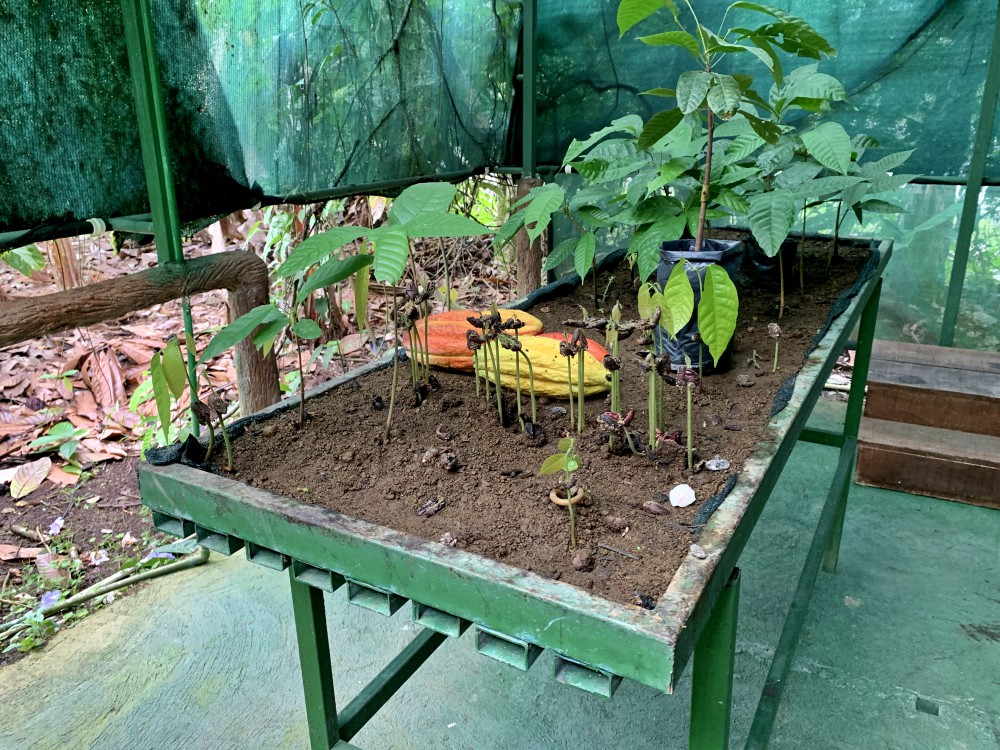 Stages of Cacao plant growth cycle
Stages of Cacao plant growth cycle
Our guide explained to us how important the inside flesh that surrounds each individual cacao seed — cracking one open and letting us taste.
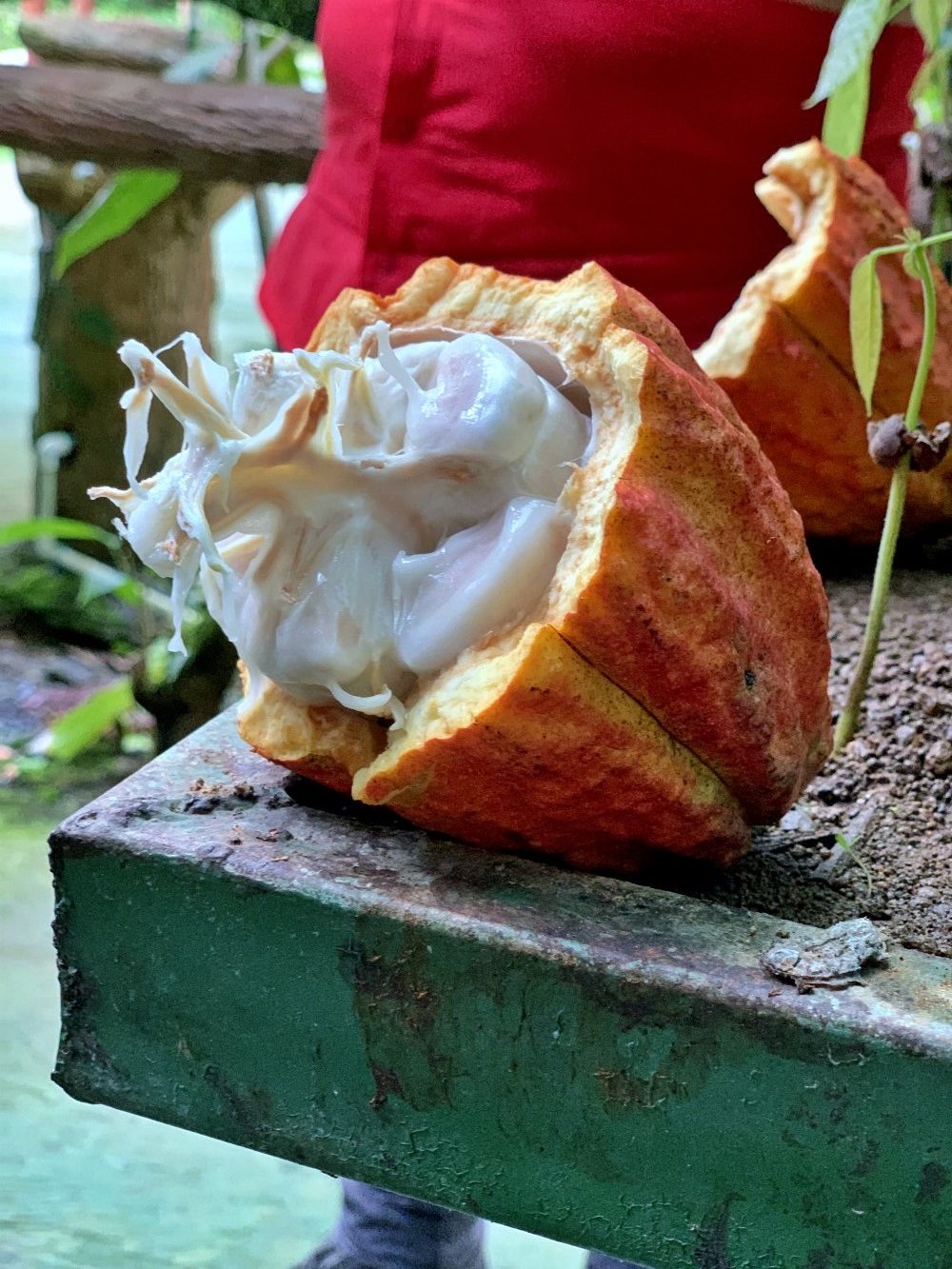 Inside, white segments coat each individual pod. You can't eat the pod at this point, but the white coating tastes like guava and supposedly, the slimier the better for final chocolate taste.
Inside, white segments coat each individual pod. You can't eat the pod at this point, but the white coating tastes like guava and supposedly, the slimier the better for final chocolate taste.
From here, chocolate is dried and fermented. Once this happened, it will be ready to grind into a pure cacao paste.
After trying the 'drink of the gods' (a lovely chocolaty tea that we bought some of to bring home), we had the chance to make our own chocolate bars — adding sugar, milk, cayenne, cinnamon, honey, or whatever we thought best.
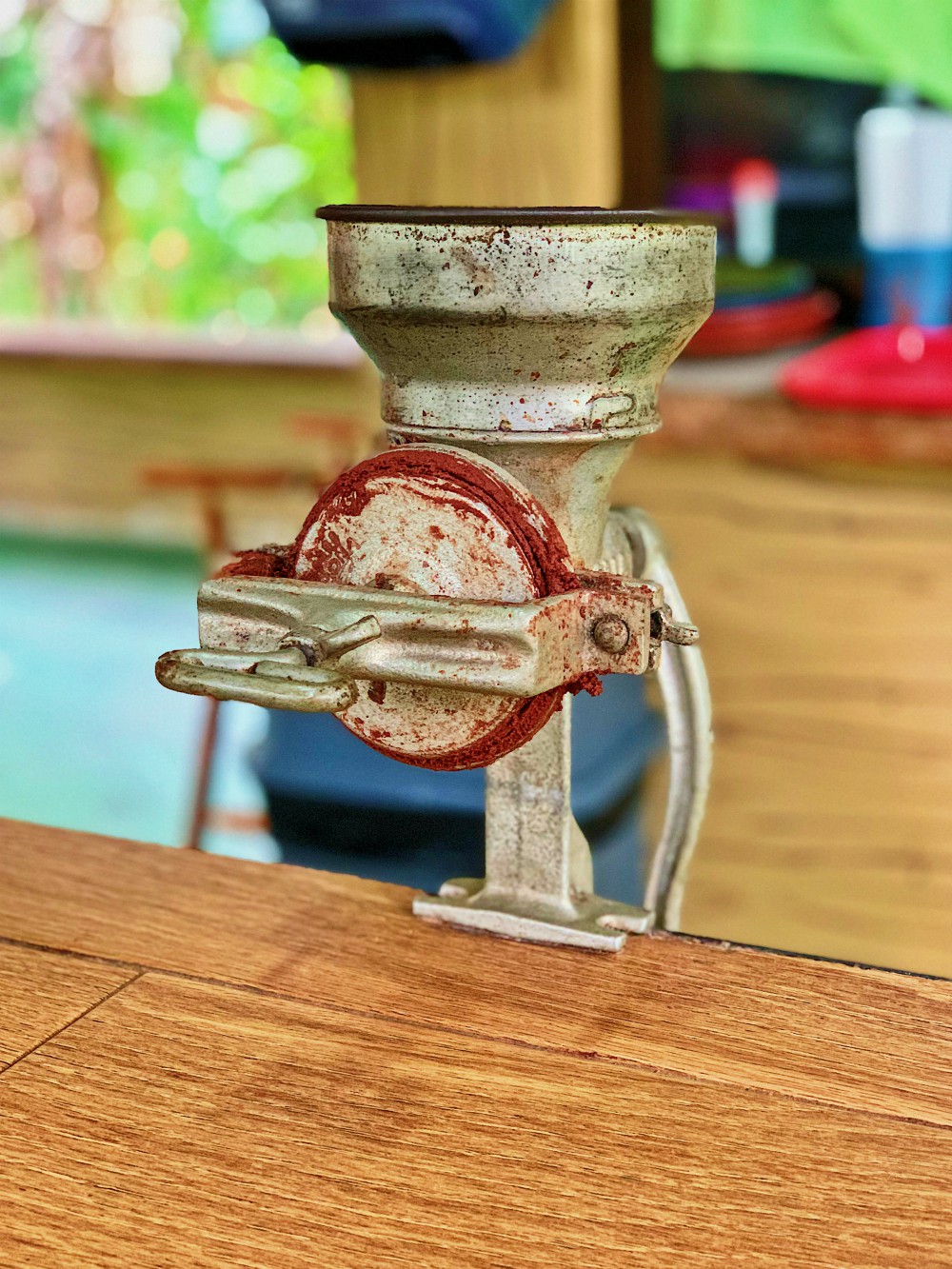 Cacao paste from which chocolate is made
Cacao paste from which chocolate is made
Then it was on to coffee production! Coffee plants prefer much cooler climates than cacao, and the type of coffee plant determines how bitter the coffee will be.
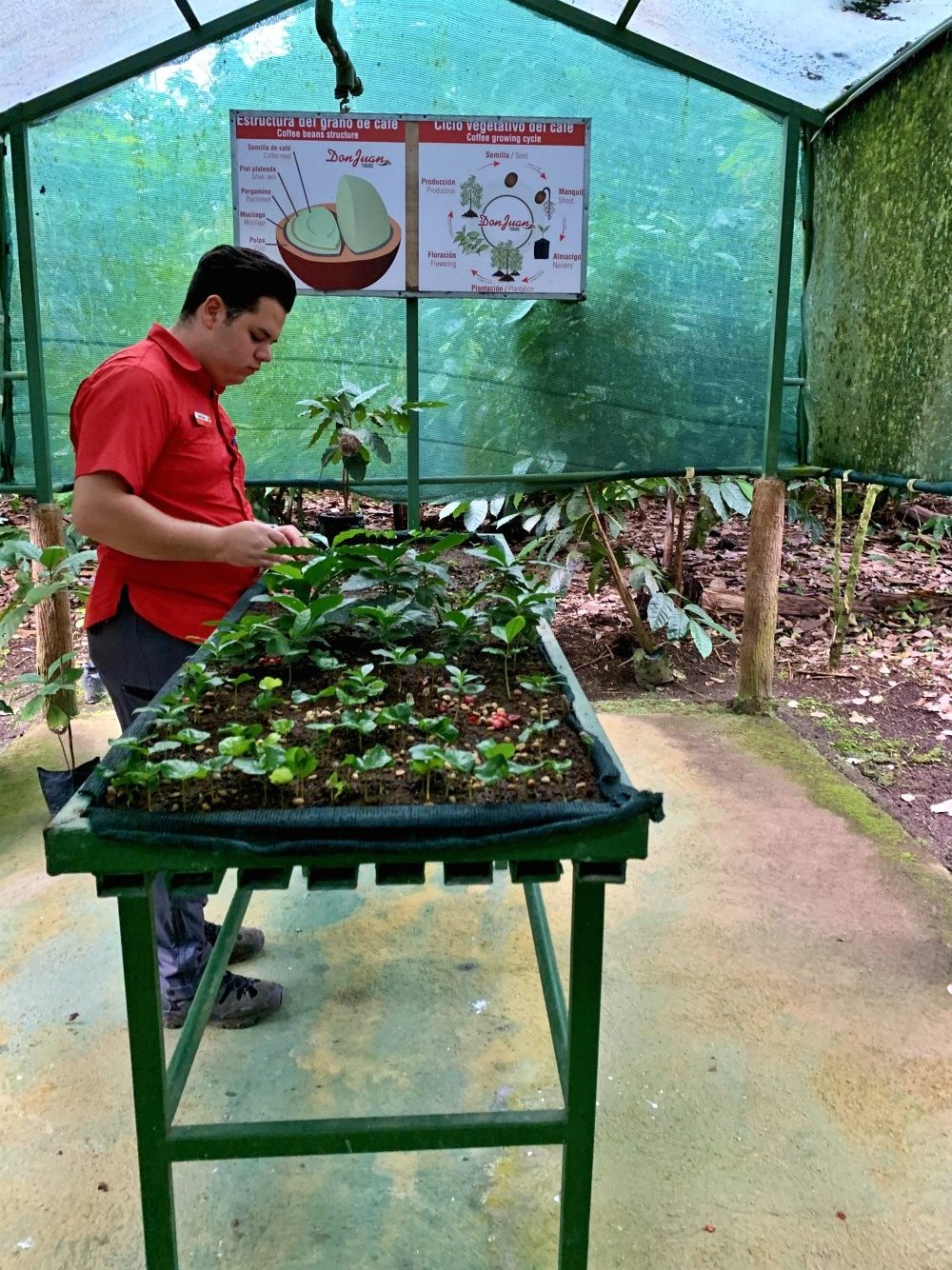 Explaining the coffee plant's growing cycle
Explaining the coffee plant's growing cycle
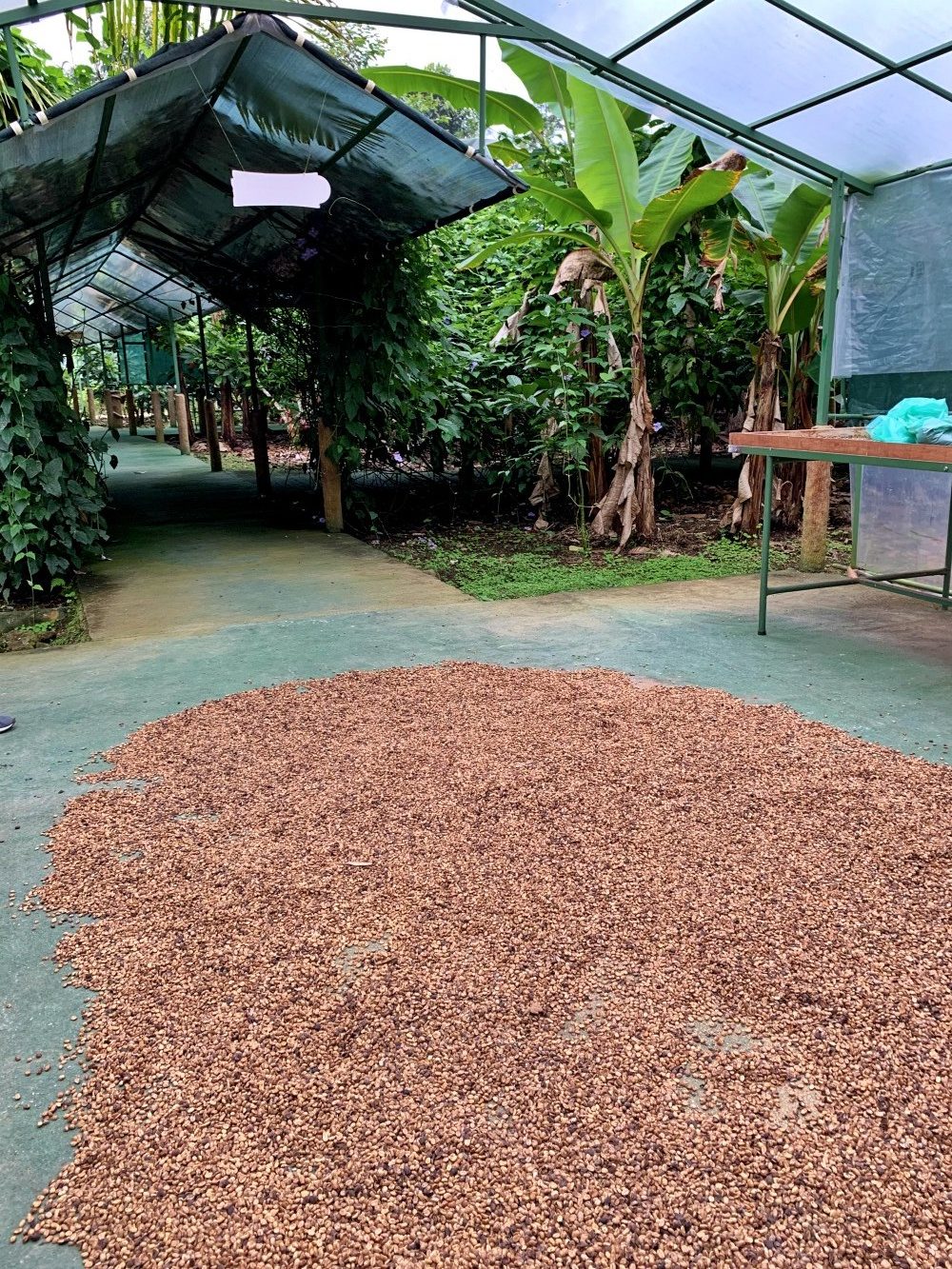 Dried coffee beans. At this stage, you can walk on them they're so tough and if you tried to taste one you'd likely chip a tooth.
Dried coffee beans. At this stage, you can walk on them they're so tough and if you tried to taste one you'd likely chip a tooth.
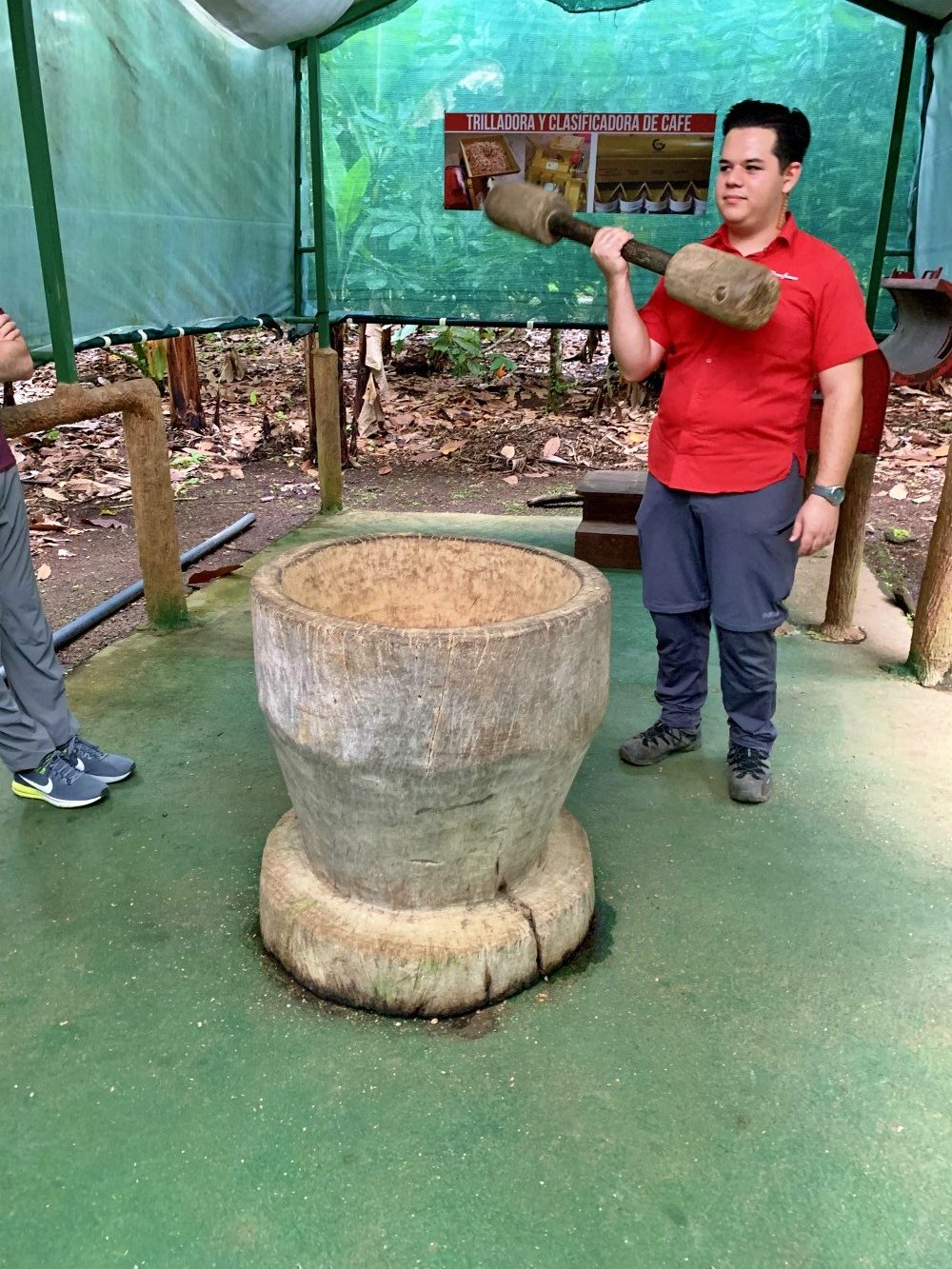 Traditional method for removing the outer shell.
Traditional method for removing the outer shell.
Here, we learned that the intensity of caffeine has more to do with the amount of time and temperature of the water than the type of roast. Incredibly hot water steeping the grinds for a while will yield more caffeine — like you're typical American coffee — while an espresso (hot water passing quickly through grounds) has actually less caffeine (no doubt why the Italians take multiple espresso breaks throughout the day!)
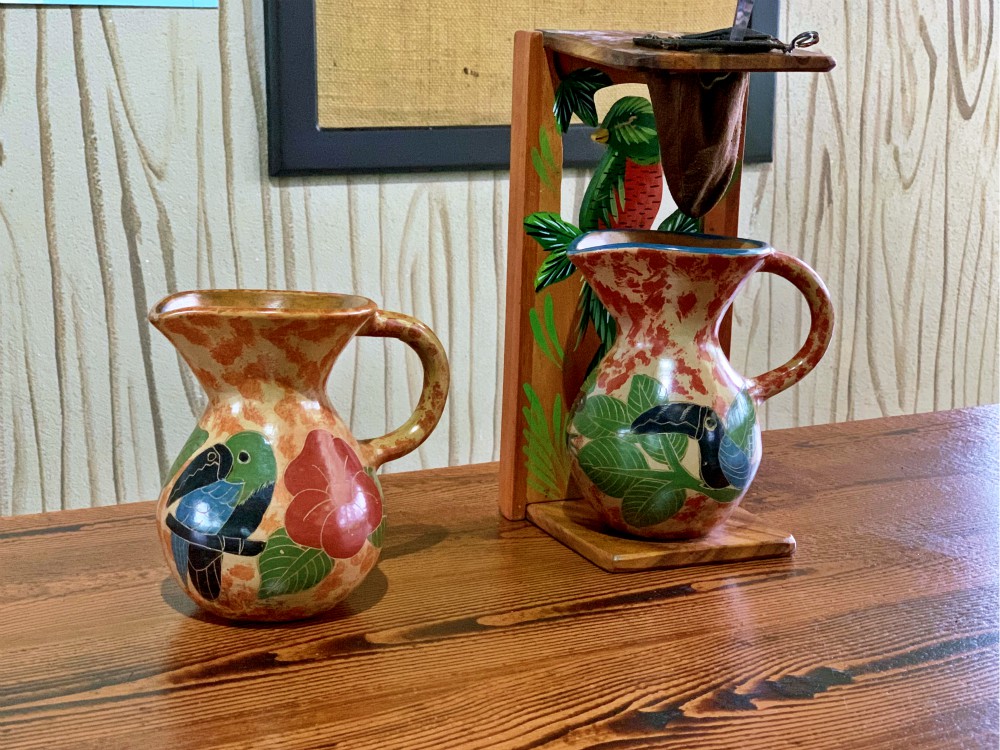 The traditional Costa Rican way to brew coffee, similar to pour-over.
The traditional Costa Rican way to brew coffee, similar to pour-over.
We certainly learned a lot on the tour, but it was a 2-hour walking tour and parts of it could have been done faster, or perhaps they should have started us with the coffee to perk us up!
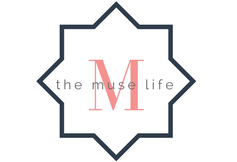
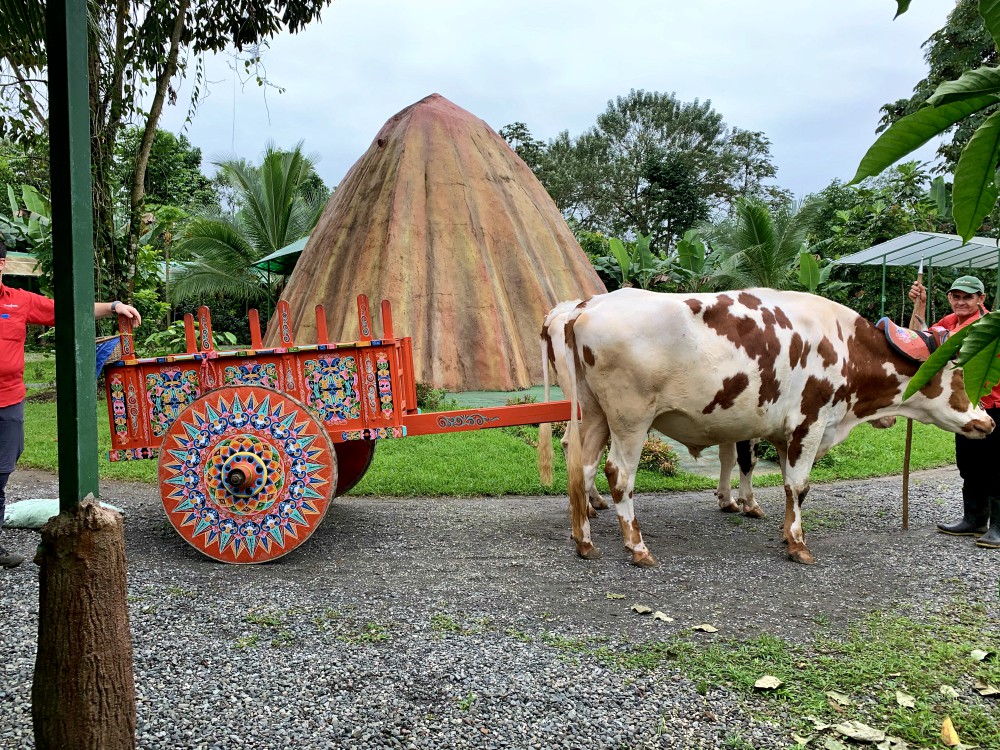
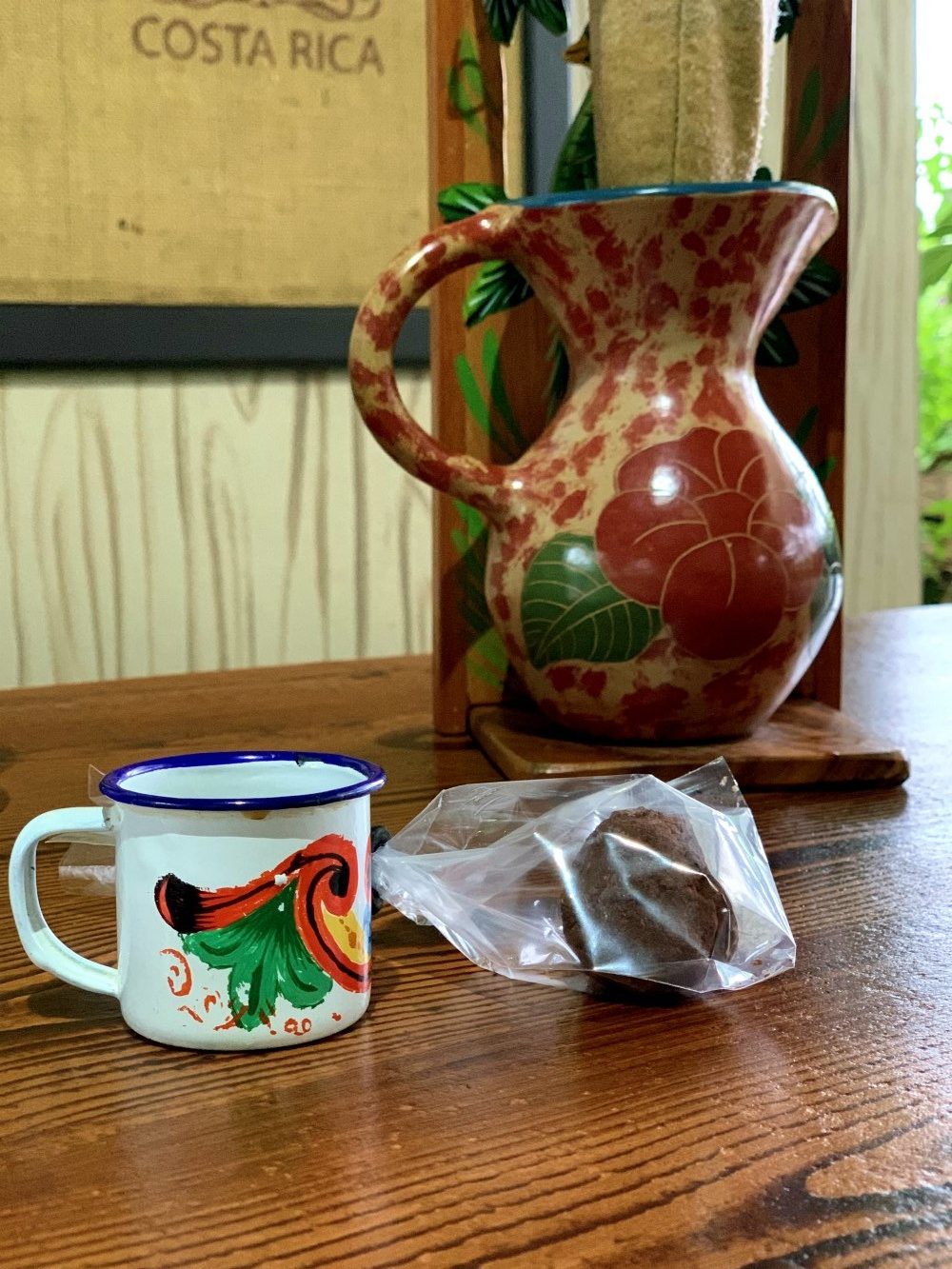
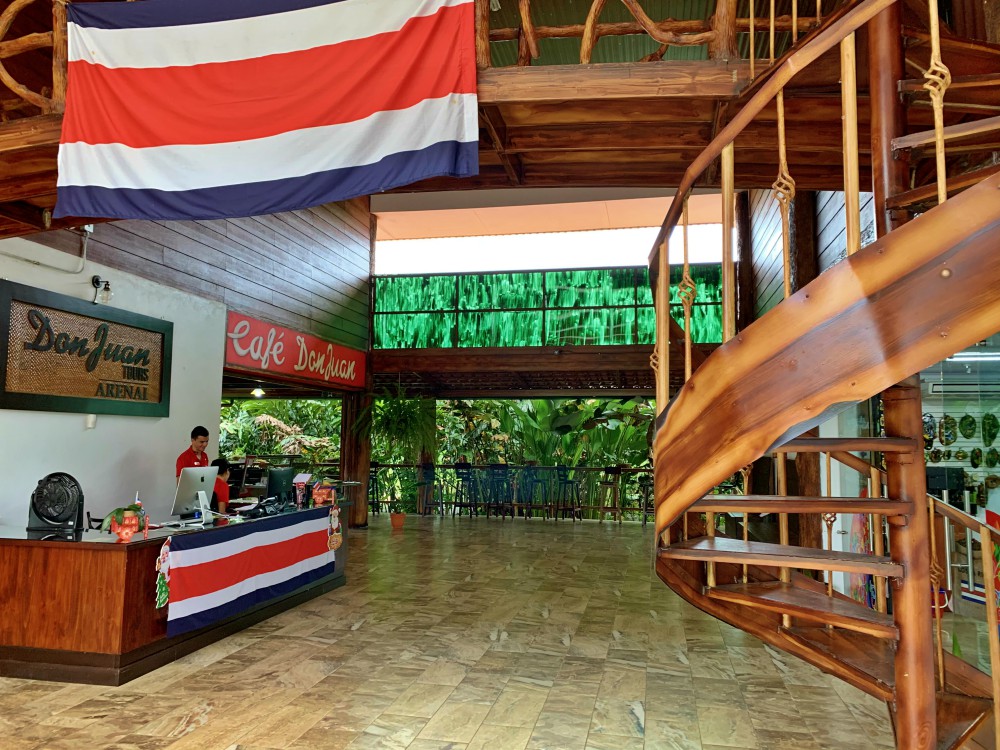
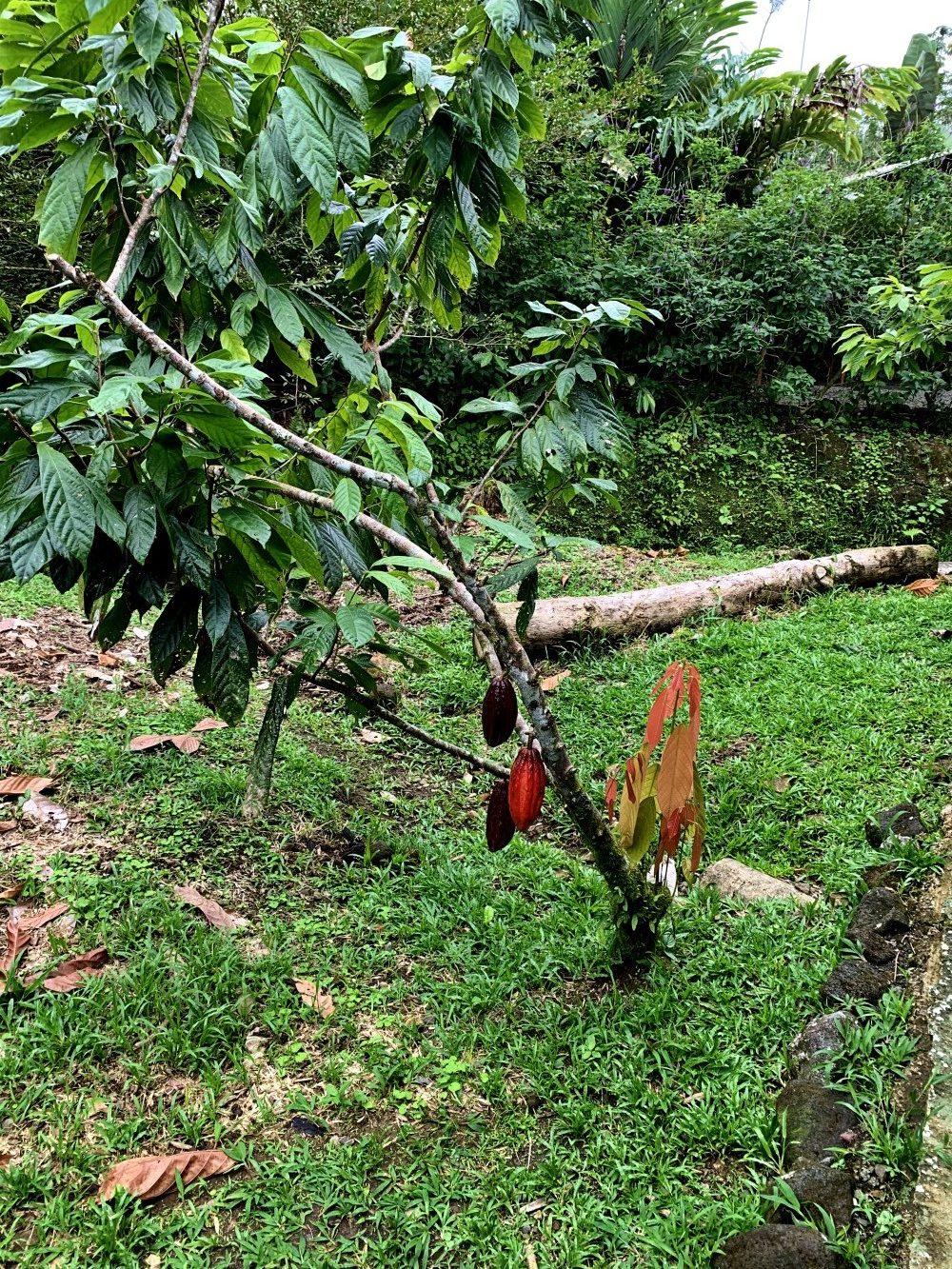
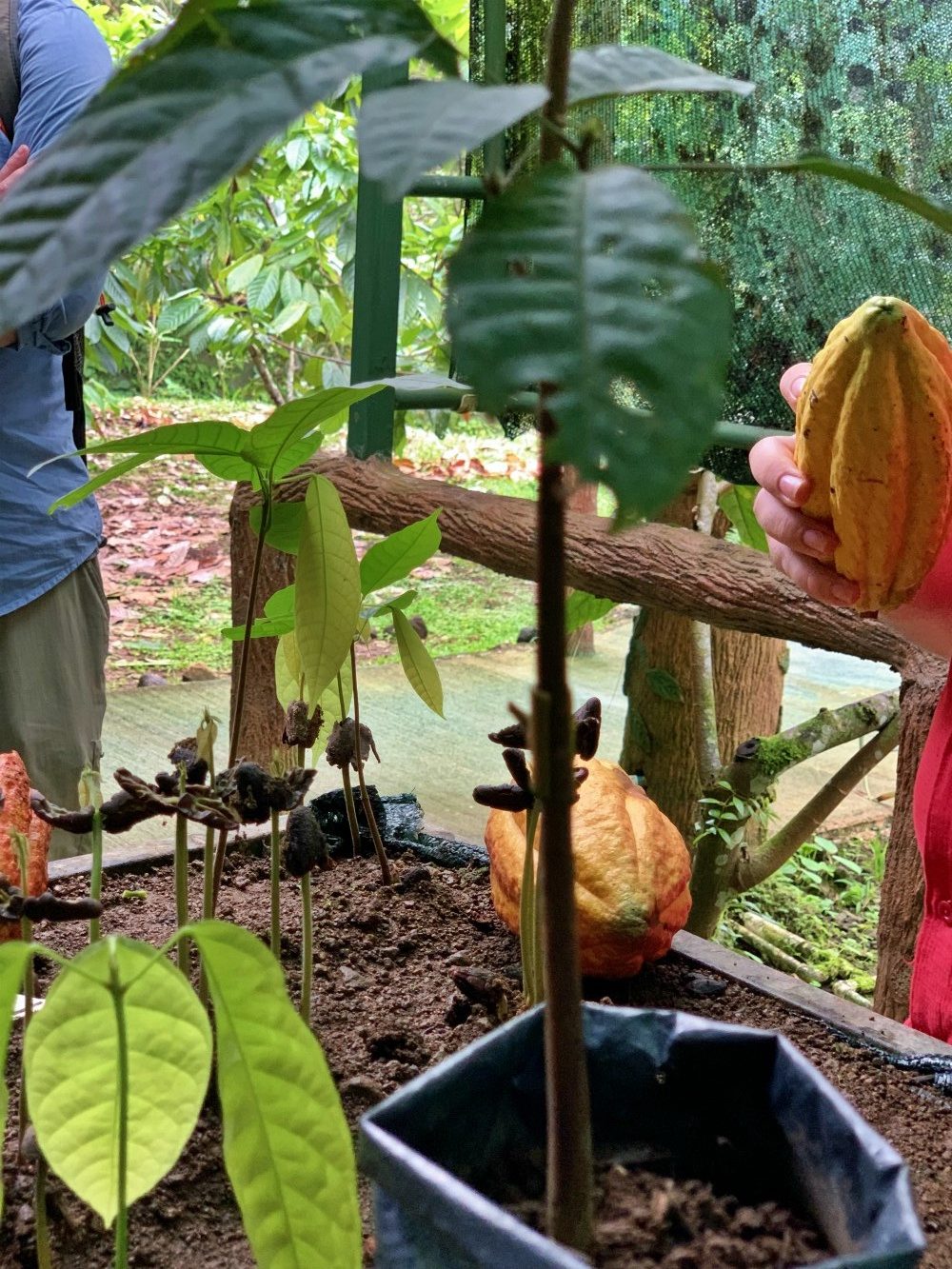
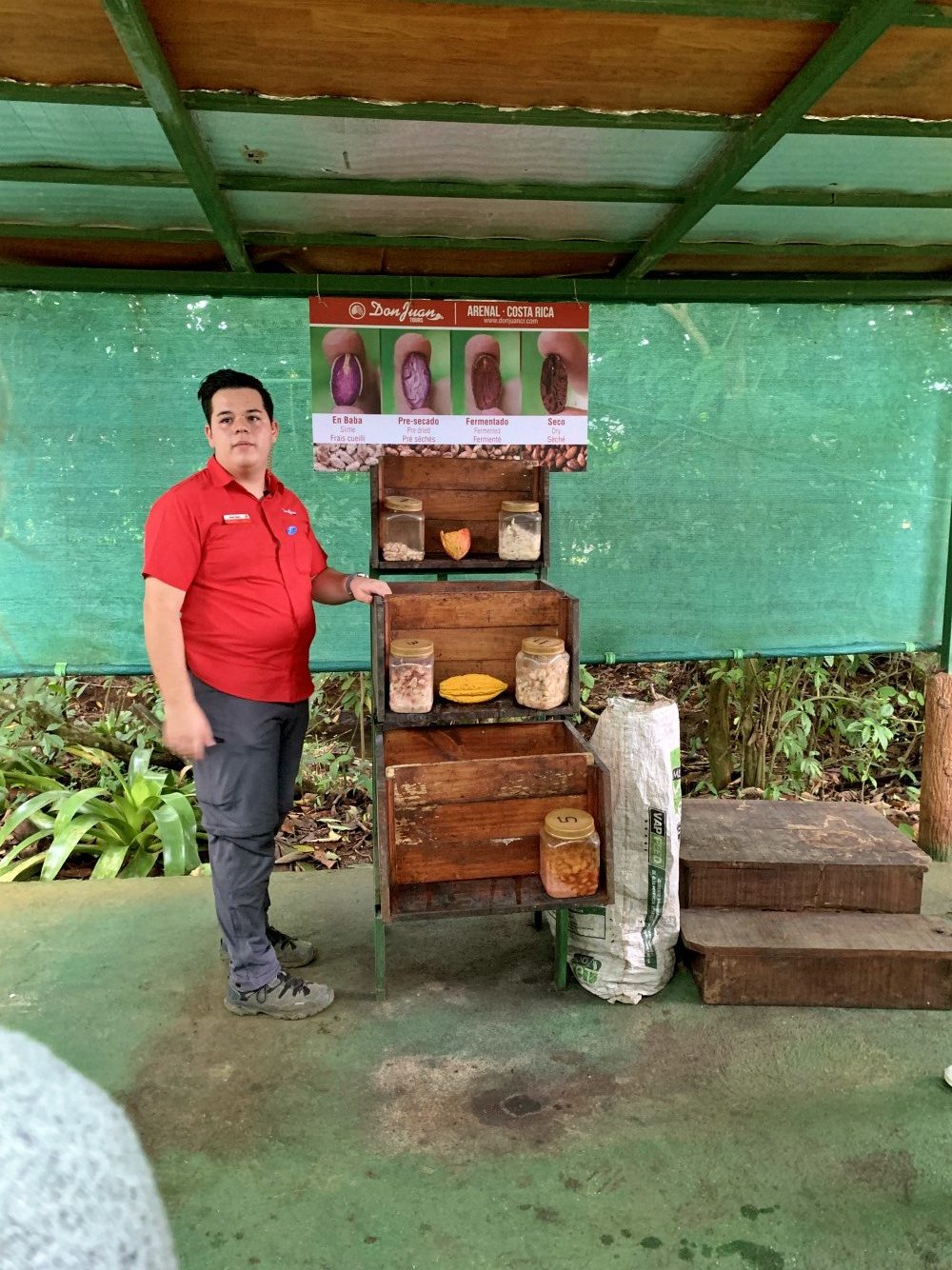
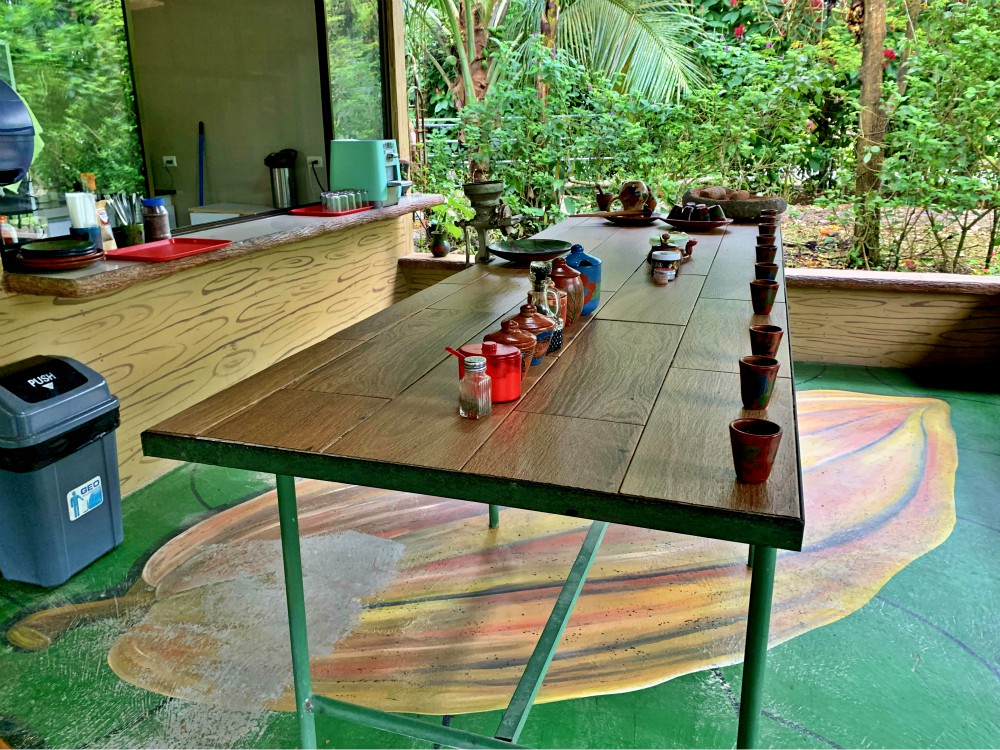
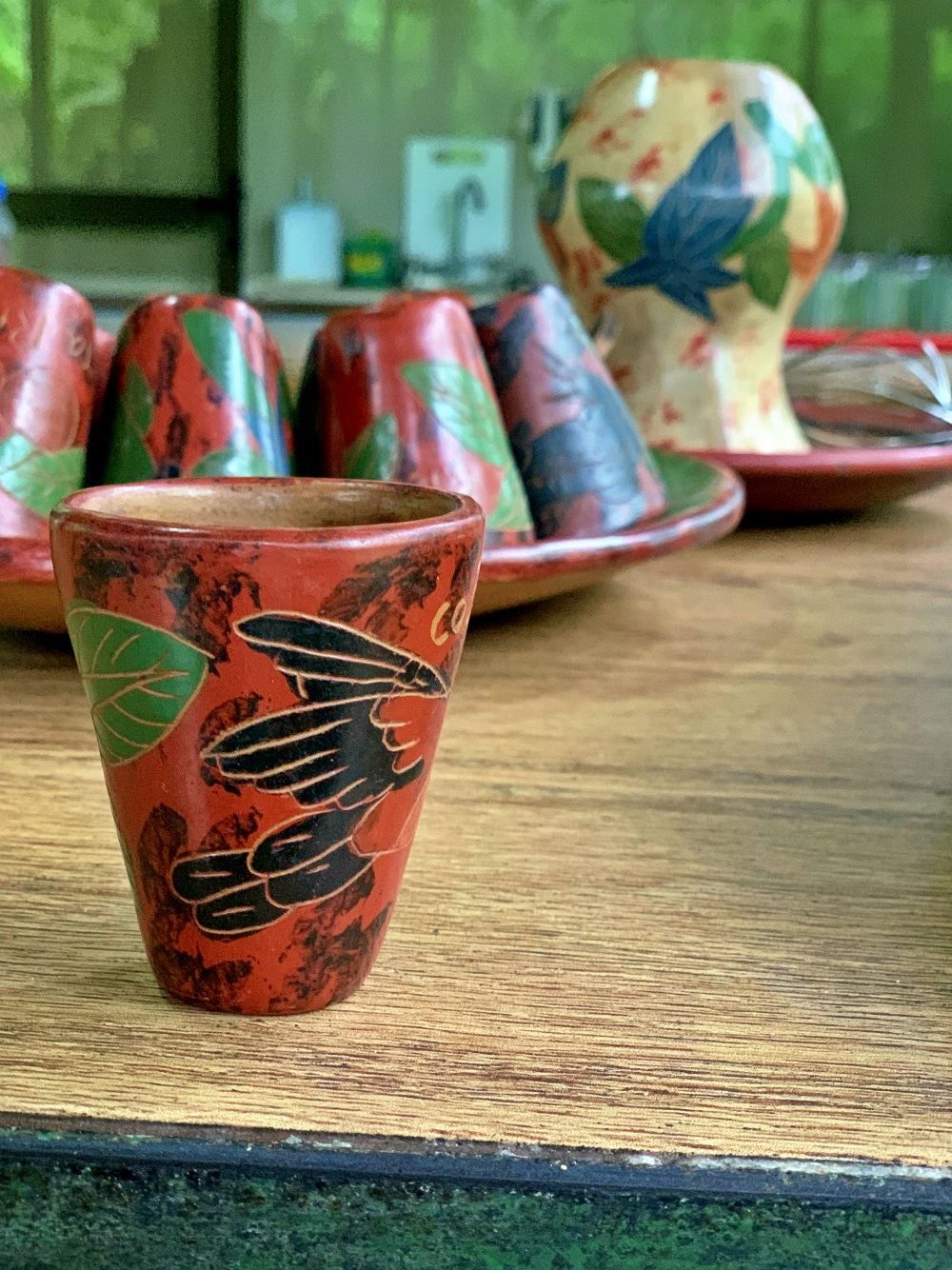
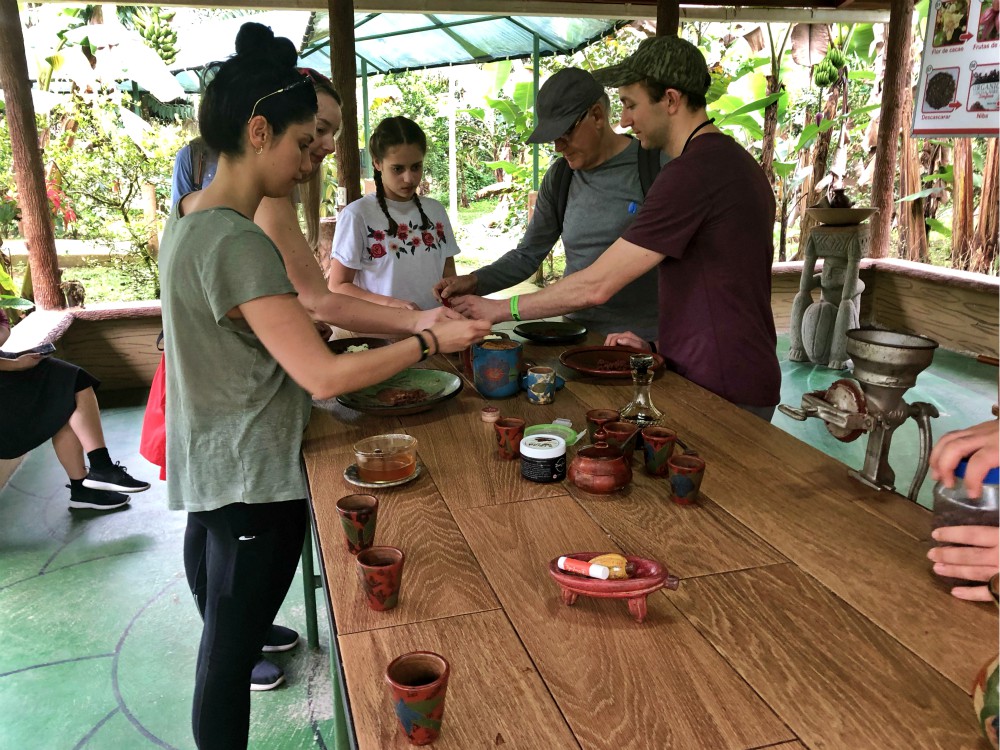
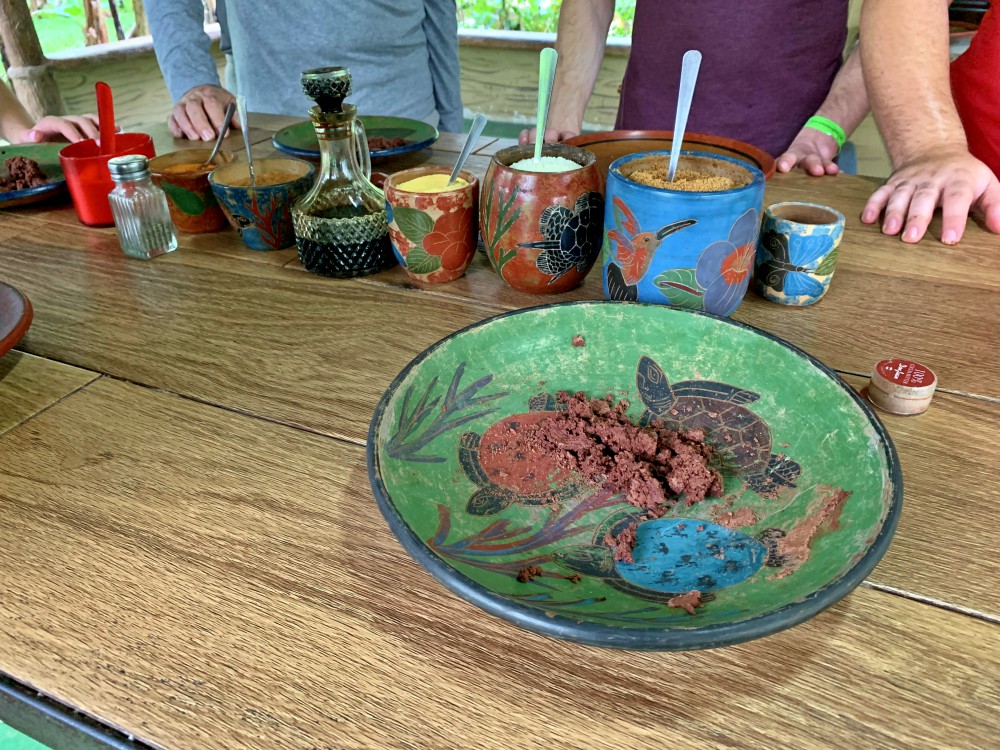

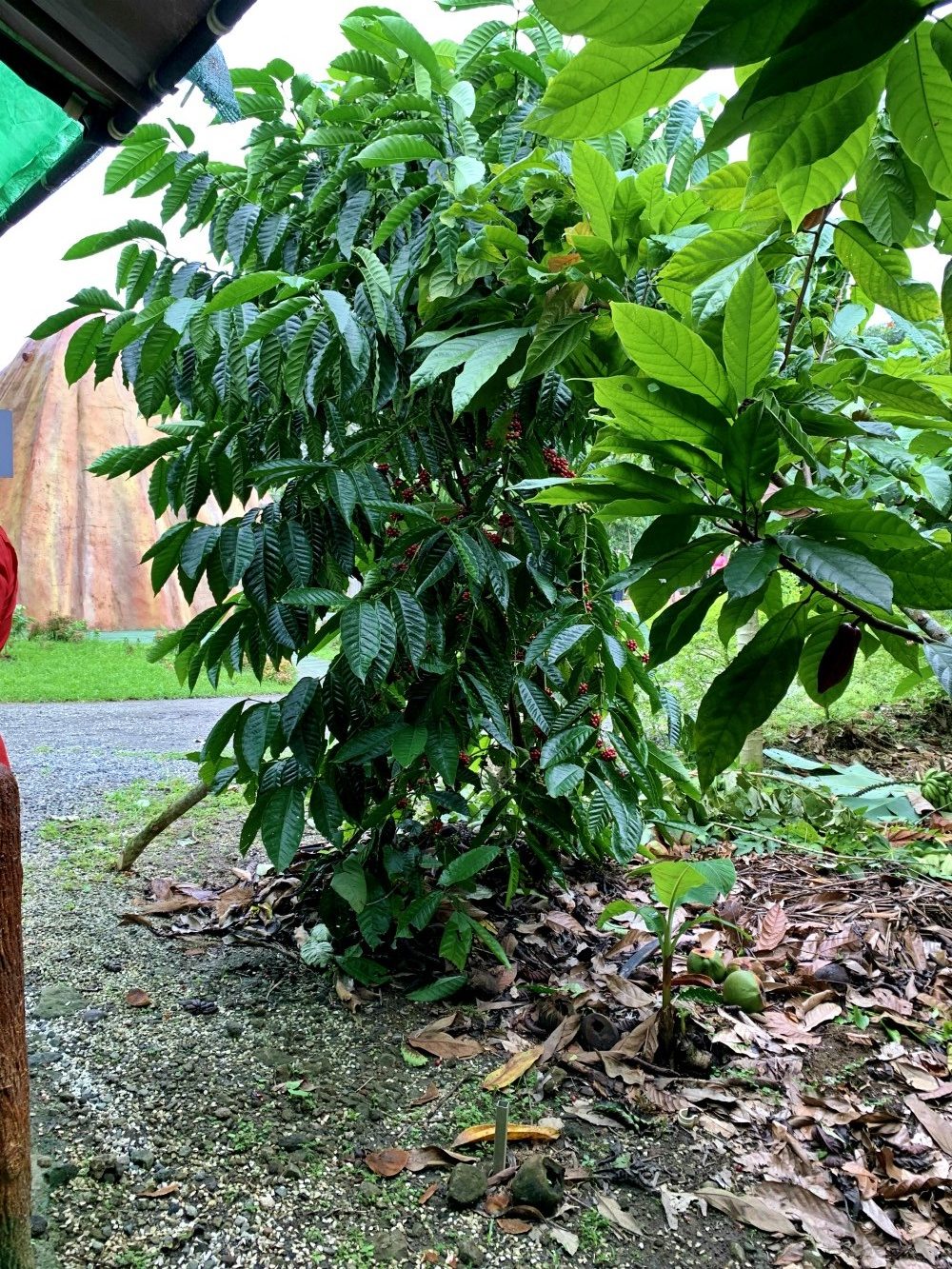

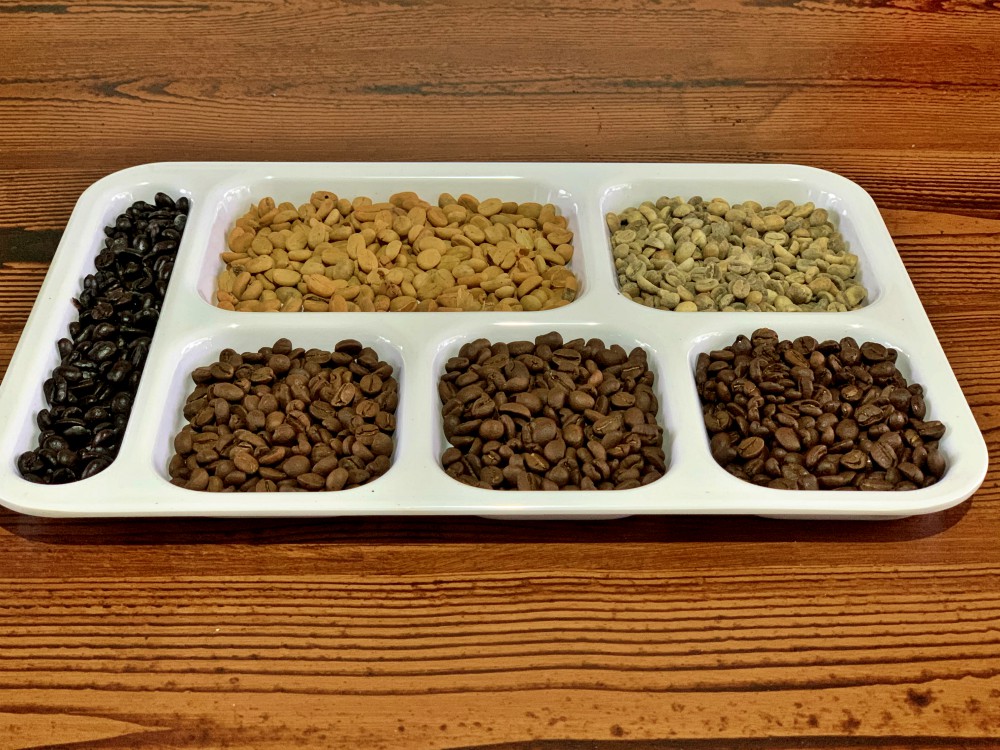
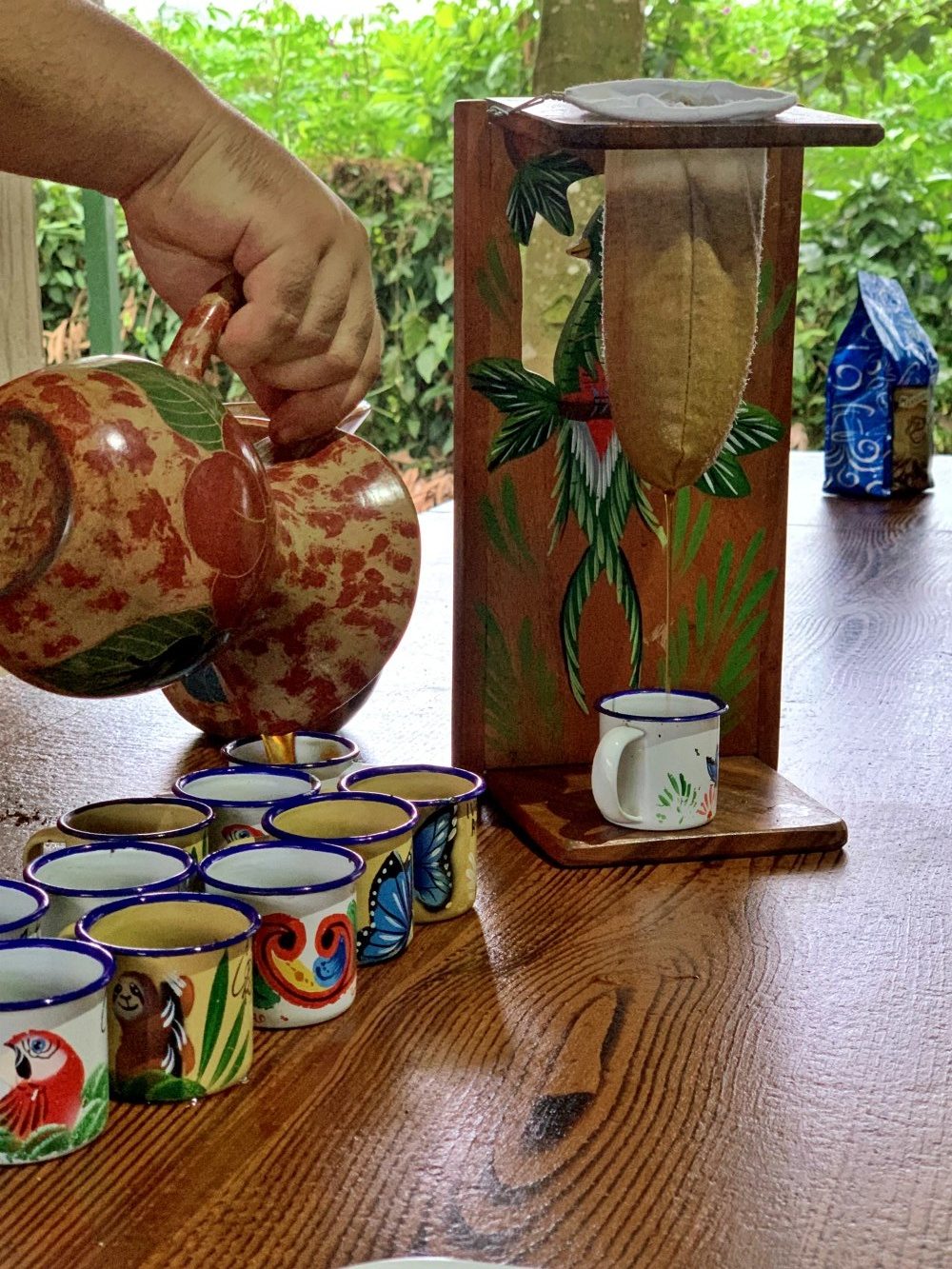
Loved this tour. We will have to try it if we ever get to Costa Rica. Robert really drooled over the chocolate tour.
Thanks for sharing. Do you have any of that chocolaty tea left?
It was great! A little long, but it was very informative. We do have some left, it’s definitely something to experiment with as you can make it more like a hot chocolate or a tea.